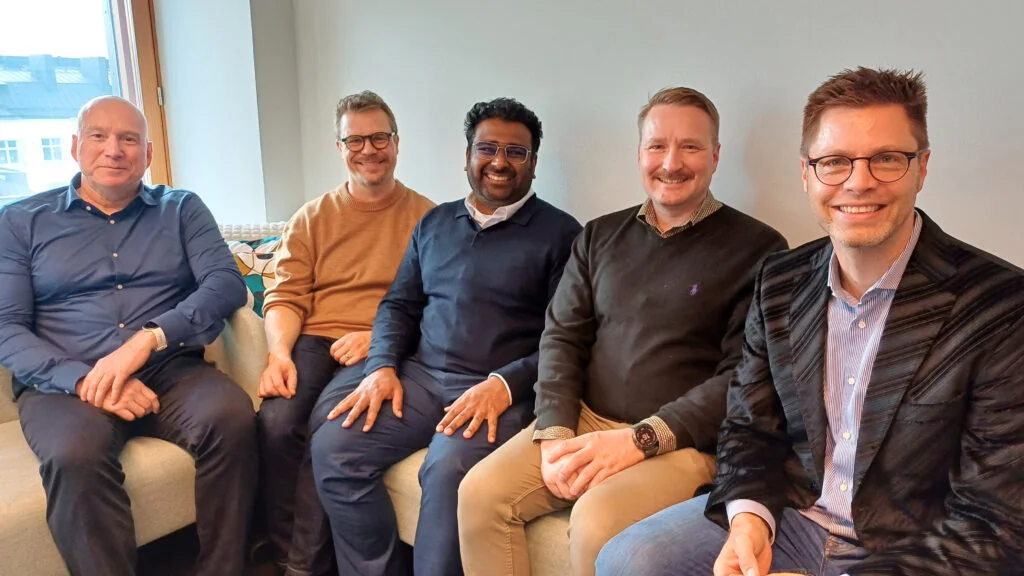When the OGC team, represented by CEO Peter Rabley, CTO Ingo Simonis and Senior Director Muthu Kumar, visited Helsinki in early October, they found a country deeply invested in the power of location. From the National Land Survey to research hubs and startups, Finland’s geospatial community is playing a growing role in shaping how the world understands and uses location data.
For more than 30 years, the Open Geospatial Consortium (OGC) has helped define how the world shares and uses location information. But as technology and society evolve, OGC itself is evolving too. Rabley explained that the organization is shifting from being known primarily for its standards to becoming a dynamic, collaborative community that brings together governments, companies, and innovators to drive change.
“Location data is the cornerstone of today’s economy,” Rabley said. “Whether it’s Google Maps, Overture Maps, or even Pokémon Go, the world’s digital infrastructure runs on high-quality, trusted data. Global internet dominance is determined by who can deliver it best.”
“Location data is the cornerstone of today’s economy.”
Peter Rabley, CEO of the OGC
That message resonated with Antti Jakobsson, Chief Expert at Finland’s National Land Survey, who noted how Overture Maps underscores the importance of collaboration. “Producing high-quality location data continuously and globally is expensive, and no single operator can do it alone,” Jakobsson said. “When data is developed together, the quality and usability are far better than if any organization worked alone.”
It’s a lesson Finland has long understood: the best data comes from working together.
From maps to models: the rise of GeoAI
As the discussions in Helsinki turned toward artificial intelligence, the conversation shifted from maps to models – from representing the world to helping machines understand it.
While large language models like ChatGPT can process immense volumes of data, they lack a true grasp of how the physical world works. They can predict the next word – but not the next event. That’s where world models come in: AI systems designed to model cause and effect, state and change, and the relationships that define our environment.
“World models offer fascinating possibilities when combined with Building Information Models and digital twins,” said Rabley. “Imagine AI using global Sentinel data to understand where forests grow, where cities expand, and how changes in the built environment affect everything around them.”
This convergence of AI and geospatial data – what OGC calls GeoAI – has the potential to make AI systems not just intelligent, but spatially aware.

But as the group in Helsinki also noted, technology alone isn’t enough. Trust remains the foundation of progress.
“In the OGC community, we cherish trust and transparency as essential values,” Rabley said. Simonis added that as AI-generated content becomes more widespread, trust in the information itself is increasingly under strain. “Trust is measured by whether I trust the sender of the information, and whether I can trust the content,” he explained. “As AI becomes part of public decision-making, ensuring transparency, reliability, and data quality becomes even more important.”
That message resonates strongly in Finland, where open data and ethical AI have long been national priorities. The collaboration between OGC and Finland’s Location Innovation Hub (LIH) reflects that shared vision. Together, they are developing GeoAI training programs through the Location Innovation Academy, building capacity for a future where AI and geospatial data intersect responsibly and transparently.
Shaping the future together
Looking ahead, the focus is shifting toward smaller, domain-specific models that solve problems faster and more effectively. This evolution requires more than standards – it requires people. “We want to create a vibrant, open geospatial community,” said Rabley. “Collaboration with members and industry players is essential. We want to give our members real opportunities to grow their skills and shape what comes next.”
That spirit of collaboration will continue when OGC returns to Helsinki in the summer of 2026 for its next major European meeting. Rabley says Finland’s leadership in open data, ethics, and innovation makes it the perfect place for that conversation.
“Finland’s role in this discussion is vital,” he said. “Its commitment to openness and trust sets an example for the world. We look forward to deepening our collaboration across Europe and beyond.”
From Helsinki to the world, the message is clear: the future of geospatial innovation will be built together – through shared standards, trusted data, and a connected global community.
Want to learn more about GeoAI and how to apply it in your business? Explore the online courses offered by the Location Innovation Hub and available through the Location Innovation Academy. Location & AI: The Basics is tailored for European directors, managers, and consultants who want to understand the business potential of GeoAI. Location & AI: Deep Dive is aimed at specialists in AI or the geospatial field and provides a deeper understanding of how to utilize GeoAI for business and real-world challenges. Go to academy.ogc.org to start learning.






